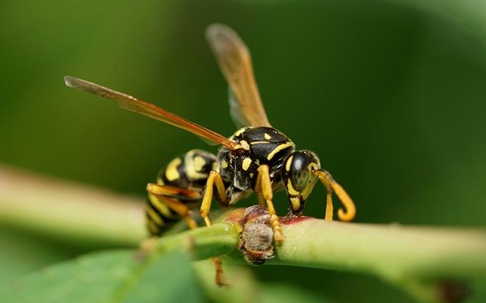One of the benefits of having a yard is that you have wide, open space to yourself. You can host a barbecue or sports game, or have a picnic. If you’re a business owner in Yakima County, you can have an event to welcome potential investors or customers. The downside is that your activities may be interrupted by flying insects, like hornets and wasps.
Wasps, which are all stinging bugs, are hard to manage. There’s no dictating the outdoors, which is their natural habitat. The risks can be great with these insects because many harbor venom. Human reactions to it can vary, but a trip to the hospital may be needed. Use this prevention guide from Prosite to learn how to avoid the critters.
What Hornets And Wasps Are Common in Yakima County? What Are the Dangers?
Bald-faced hornets and paper wasps are two prevalent species in the area. Bald-faced hornets are 0.75 of an inch long. Their narrow black bodies have white markings. Closely related to yellow jackets and paper wasps, they technically aren’t hornets. You’ll find their nests by poles, roof eaves, trees, and similar. Beware; they attack in droves aggressively and inject large amounts of venom.
Paper wasps are around 1 inch long. They have black wings and brown skin with yellow decorations. You can tell them apart from the bees they resemble by their slim and elongated figures. Like bald-faced hornets, they settle near roof eaves. Window sills, door frames, and structural voids will also be targeted because they require sheltered places for nesting. If you see a paper wasp, you have an infestation.
Foundation holes and open windows and doors are entryways for paper wasps. To form a home, they’ll use their saliva to warp plant matter. Once the mess is dry, it will look like a paper wad, hence its name. You won’t be able to peek at the interiors because the material will be too dense. In terms of shape, it will appear as an umbrella. Alternatively, they're called “umbrella wasps.” Their cocoon process is so unique, it separates them from other stinging pests.
Here are two additional facts about wasps that are important:
- The feeding and pollination practices of wasps sustain the ecosystem.
- Wasp stings cause pain, skin inflammation, and allergic reactions. They can strike many times and trigger greater physical responses.
How Can Yakima County Hornets & Wasps Be Prevented?
Though you can’t influence Mother Nature, you have power over the elements in your own yard. Doing the following tasks can deter hornets and wasps from coming around your home or business:
- Mowing the lawn and trimming greenery on a routine basis. Be sure to get rid of organic debris and plug gaps in the ground.
- Try not to overplant flowers.
- Using plants like citronella and eucalyptus for gardens. They have repellent properties.
- Distancing greenery from the property by two feet or more.
- Flushing out gutters and vents regularly.
- Putting trash in canisters with tight lids.
- Maintaining the neatness of porches and roof eaves.
- Keeping food from being left out on decks and patios.
- Contact Prosite if you have critters where wasps eat.
What Can Prosite Do About Yakima County Hornets & Wasps?
Hornets and wasps are dangerous, and therefore unwelcome. Eliminating them necessitates professional interventions because it’s unwise to tackle a nest on your own. There’s always a chance you could be stung. Reach out to us at Prosite. We have advanced, industrial-grade treatments fashioned for exterior care to eradicate stinging insects. Our technicians are knowledgeable and skilled. You can get a free consultation when you call us today!

